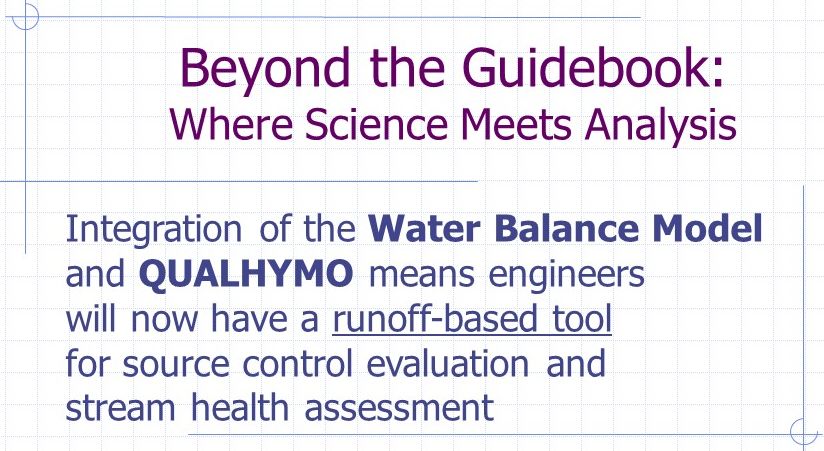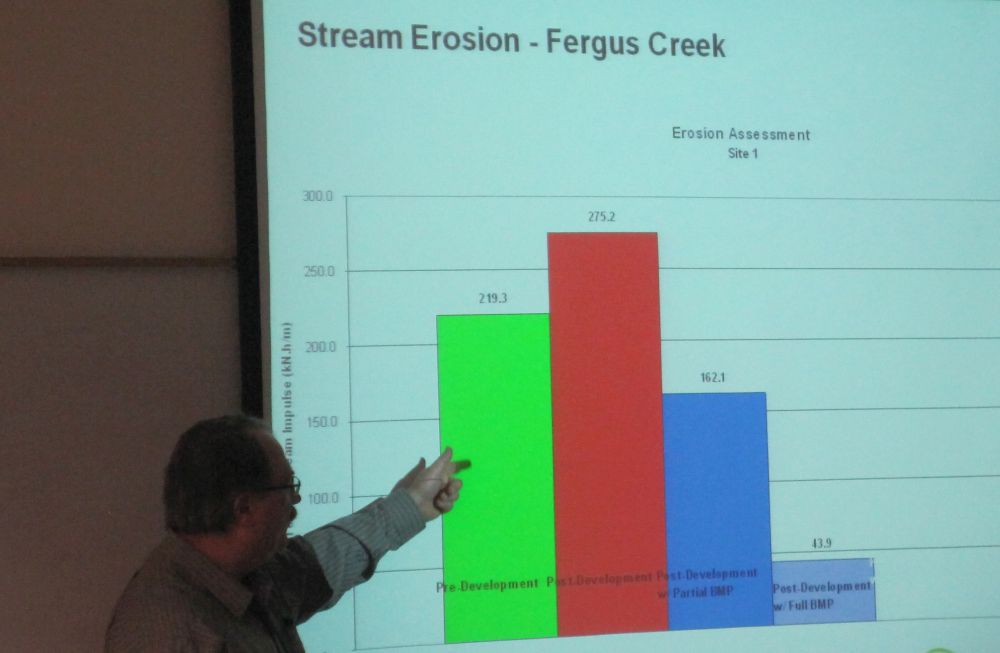Flashback to 2007: BC’s “Beyond the Guidebook Initiative” introduced at Annual BCWWA Conference
Note to Reader:
Held in Penticton, the 2007 Annual Conference of the British Columbia Water & Waste Association (BCWWA) provided a forum for introducing the “Beyond the Guidebook initiative” to a BC audience. Jim Dumont, assisted by Kim Stephens, made a presentation on behalf of the Inter-Governmental Water Balance Model Partnership (IGP) and the City of Surrey.
Because the City was a founding members of the IGP, the City ‘s Fergus Creek watershed provided a pilot project opportunity to apply the Water Balance Methodology that underpins both the Beyond the Guidebook Initiative and the Water Balance Model powered by QUALHYMO scenario comparison and decision support tool.
Guidebook Premise: Land Development and Watershed Protection can be Compatible
“In 2002, DFO released the first draft of Urban Stormwater Management Guidelines and Best Management Practices for Protection of Fish and Fish Habitat. In 2002, the Province of British Columbia published Stormwater Planning: A Guidebook for British Columbia,” explained Jim Dumont. He is the Engineering Applications Authority for the  Water Balance Model Partnership.
Water Balance Model Partnership.
“Both documents urge application of continuous simulation techniques using multi-year data for the design of rainwater management facilities that protect stream health. Because drainage practitioners are primarily concerned with the sizing of drainage conveyance facilities, however, typical design practice has become reliant on the use of single-event design storms.”
Rainfall Based versus Runoff Based
“Through our analyses we have observed some unintended consequences when this Rainfall Based approach is followed. The Runoff Based approach, on the other hand, uses continuous simulation. This enables assessment of the direct impacts to streams. “
“We have been able to optimize the designs of mitigation works to both reduce the costs and to increase their effectiveness. In this manner we have gone Beyond the Guidebook in a rational and logical manner to reduce the total system requirements and cost.”
Fergus Creek Pilot
“To accommodate the requirement to maintain stream health, advances in analysis techniques have led to a system that provides a quantitative analysis of both the potential erosion and the availability of aquatic habitat.”
“A potentially complex set of rainwater runoff source controls have been optimized for implementation within several watersheds in the City of Surrey. The optimized systems provided a reduction in stream erosion potential while maintaining the stream duration of flows for aquatic habitat and volumetric runoff and reducing the sediment washoff from the developing watersheds,” concluded Jim Dumont.
To Learn More:
Download a PDF copy of the PowerPoint presentation by Jim Dumont and Kim Stephens, and titled Beyond the Guidebook: Making the Connection between Rainwater Management and Stream Health (2.0 MB)




